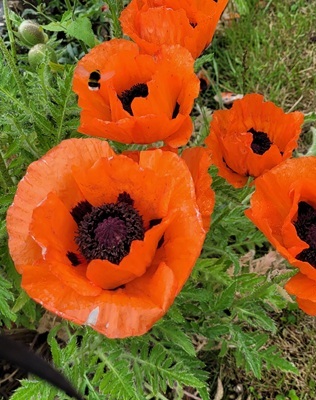Flower Properties
| Property | Value |
|---|---|
| English Name | Oriental Poppy |
| MainColor | Red |
| PlantType | |
| Growth Type | |
| Season | May |
| ImageUrl | Papaver-001 |
| Photographer | DP |
| Location | |
| Human Toxicity |
Flower Details
Description
The Oriental poppy is a striking garden flower known for its large, vibrant blooms in shades of red, orange, pink, or white, often with a dark blotch at the base of each petal. It has hairy, deeply cut leaves and tall, sturdy stems, making it a dramatic highlight in flower borders.
Distribution
Native to the Caucasus, northeastern Turkey, and northern Iran, Papaver orientale is now widely cultivated in UK gardens. It thrives in sunny spots with well-drained soil and blooms in late spring to early summer.
Medicinal/Other Uses
Unlike its close relative Papaver somniferum, Oriental poppies are not used medicinally. They do not contain significant amounts of the narcotic alkaloids found in other species of poppy.
Edibility
This species is not edible and should not be consumed. It’s grown purely for ornamental purposes.
Human Toxicity

Although not dangerously toxic, parts of the plant may cause mild stomach upset if ingested. Best admired, not eaten.
Pet Toxicity

Toxic to pets (causes sedation, breathing difficulty, gastrointestinal upset)
Active Compounds
Contains minimal alkaloids and has not been studied extensively for chemical composition. It may contain trace amounts of isoquinoline-type alkaloids, but not enough for any therapeutic or harmful effect.
